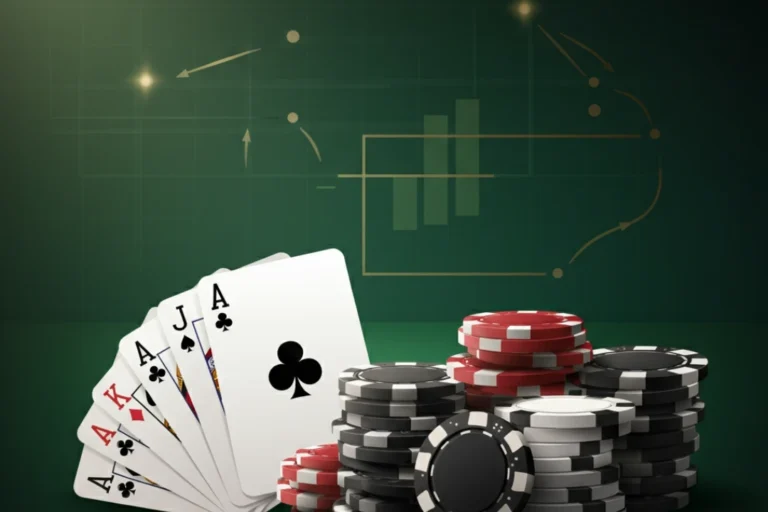Poker isn’t just a game of chance—it’s a contest of wit, patience, and skill. If you want to take your play to the next level, real improvement starts with smart adjustments and proven advice. These down-to-earth poker strategy tips are designed to help you sharpen your instincts, avoid common traps, and spot opportunities that others miss. Whether you play online or live games, these practical tips will help you build an edge over time.
Mastering Preflop Ranges and Hand Selection
If you’ve ever felt lost about which hands to play, you’re not alone. Many players make the mistake of playing too many weak hands, especially from early positions. A simple rule: stick to stronger starting hands when you’re first to act and expand your range as you get closer to the button.
Why Position Matters from the Start
Your seat at the table is more important than many realize. The later you act in a hand, the more information you have, letting you make smarter moves. As you get closer to the dealer button, you can afford to open up your range and steal more pots.
Reading the Table and Adapting
No two tables play the same. If you notice your opponents are playing it safe, loosen your range and apply pressure. Against aggressive tables, tighten up and wait for big hands—you’ll find opportunities to catch someone overplaying.
Leveraging Positional Advantage
Position is everything in poker. When you’re last to act, you get to see what everyone else does before you decide. This helps with both value betting and well-timed bluffs. Paying attention to your position and acting accordingly is one of the best poker strategy tips you’ll ever use.
Develop Effective Bet Sizing
Throwing out random chip amounts is a recipe for disaster. Every bet you make should have a reason behind it, serving to maximize value or push opponents off hands.
- Value Betting: When you’re holding a strong hand, bet enough to get called by worse hands. Don’t just bet for the sake of building the pot—consider what weaker hands might call.
- Bluffing: If you want your opponent to fold, make your bluff credible with the right size. Betting too small only gives free cards; betting too big may look suspicious. Find the sweet spot based on the situation, board, and your table image.
Using Pot Odds and Implied Odds
At some point, you’ll face a decision with a drawing hand. Knowing your pot odds—the relationship between the current pot size and your call—helps you make correct decisions over the long run.
- Pot Odds: If the pot has $100 and you need to call $20, your pot odds are 5-to-1. Compare that to your chance of hitting your draw to decide if the call makes sense.
- Implied Odds: Think beyond the current pot. If you think you can win another bet on future streets when your draw comes in, factor in that extra value before deciding.
Balancing Exploitative Play with GTO Principles
It’s tempting to always hunt for an opponent’s mistakes, but the best players understand both exploitative and game theory optimal strategies. While you should look for spots to exploit, it also pays to have a solid baseline game that’s tough to pick apart.
Picking Your Spots to Exploit
Not every player is a pro. If you spot someone folding too much or calling too often, adjust your strategy to take advantage. A little observation goes a long way here—keep mental notes on how your opponents are playing, and use their tendencies against them.
Understanding GTO and Its Role
GTO isn’t just a buzzword. It’s about having a balanced approach that opponents can’t easily counter. By studying basic GTO principles, you protect yourself against skilled players and gain confidence in tricky spots, especially when you’re up against someone paying close attention.
Managing Your Bankroll and Table Image
Solid bankroll management is your safety net—don’t underestimate it. Have enough buy-ins set aside so you’re never playing scared or making subpar decisions. At the same time, be aware of how others see your style. If you’ve played tight, bluffing becomes more believable, while loose images offer chances for value bets.
Conclusion: Keep Growing Your Poker Skills
Poker is about continuous learning. The game changes, players adapt, and strategies evolve. The best players reflect on their hands, study new concepts, and adjust to the competition. For more in-depth hand analysis and advanced discussions, check out TwoPlusTwo’s poker forums, one of the largest and most respected communities in the game. Apply these tips every session, stay humble, and you’ll see steady progress.
Frequently Asked Questions
1. What’s the most important poker strategy tip for new players?
Be picky with your starting hands and focus on playing in position whenever possible. Tight, smart starting hand selection makes the rest of the hand easier.
2. How do I decide when to bluff during a poker game?
Pick your spots based on your opponent’s tendencies, your table image, and whether your story makes sense. Bluff less often against beginners or players who love calling.
3. Can you explain pot odds in simple terms?
Pot odds help you figure out if chasing a draw is worth it based on the amount you could win. Do the math each time, and you’ll save chips in the long run.
4. What’s a good bankroll for playing poker seriously?
Set aside 20-30 cash game buy-ins or 100 tournament buy-ins as a safe bankroll foundation. This protects you from normal swings in luck or variance.
5. Should I always stick to one playing style?
Not at all—mix things up as the table and your opponents change. Adapting your style keeps you unpredictable and helps you find the most profitable plays.
You may also read: Choosing the Right Online Poker Platforms for Your Game


